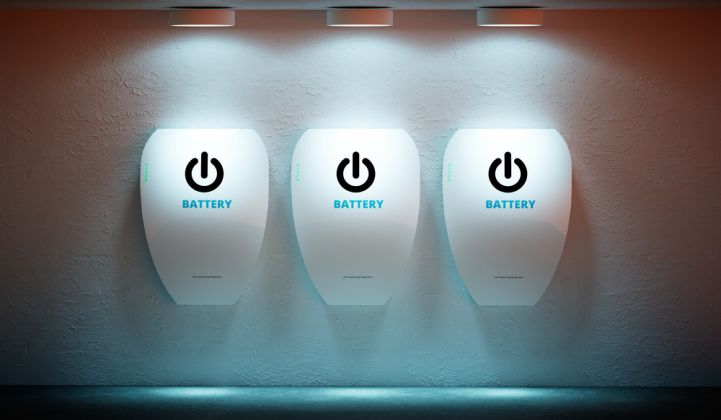A detail in Lazard’s latest levelized cost of storage (LCOS) report has highlighted a little-known but potentially major issue for the lithium-ion battery industry.
The financial advisory and asset management firm downgraded its estimates for lithium-ion round-trip efficiency to account for parasitic losses, GTM has discovered.
“As more battery systems are deployed, estimates of actual round-trip efficiencies are lower, and installation costs are higher than expected and than reported in last year’s LCOS 2.0,” according to the Lazard study.
“Consequently, estimates for total ‘Commercial’ use case LCOS rose slightly, despite [a] lower equipment cost estimate," it states.
Lazard’s two previous LCOS studies had simply used the round-trip efficiency of the battery and power electronics since there was little reliable data on the heating, ventilation and air conditioning (HVAC) requirements of the system, Lazard said.
Experience is beginning to show this parasitic load could be significant. By its LCOS 3.0 study, said Lazard, some published reports and estimates were providing a range of 80 percent to 90 percent round-trip efficiency for entire systems, including the cooling load.
Figures for parasitic loss in lithium-ion battery systems remain notoriously hard to find. “It’s almost impossible to find detailed information on this subject,” said Hugh Sharman, principal at the energy consultancy Incoteco.
HVAC energy consumption levels will also vary between projects as different regions and usage levels require different cooling loads, Lazard noted.
One study of three battery systems in 2014, by experts from EA Technology and Northern Powergrid, hinted that electrical energy storage (EES) losses might be significantly higher than those used by Lazard in its calculations.
“The round-trip efficiencies for the EES systems have been calculated as between 83 percent and 86 percent, falling to between 41 percent and 69 percent where parasitic loads are included,” concluded the study.
Alongside the impact of parasitic load, the other wrinkle uncovered by Lazard in this year’s LCOS study was higher installation costs. Like round-trip efficiency, the installation cost figure was adjusted this year to account for greater real-world experience, Lazard said.
Engineering, construction and procurement (EPC) has been found to be the most widely variable factor in energy storage system deployment, both by market segment and year to year, said Lazard.
And within EPC, engineering and construction are the main issues driving variability. Engineering costs have been found to vary widely because retrofitting a battery into a building can require a lot of design work, depending on the location.
Often this engineering work is not easily translatable to other locations, as it is done to fit the battery into a specific location. Such non-recurring engineering costs, unlike other elements within the energy storage value chain, do not decrease as the number of deployments grows.
Similarly, construction costs, as a percentage of the capital budget, will generally increase as the size of the system declines, as there are a number of fixed costs, such as labor hours, that do not easily scale.
This led to a significant adjustment in Lazard’s cost estimates, according to the team that carried out the LCOS study. EPC costs for residential installations were 25 percent above those for larger projects.
Finally, said Lazard, each location will have its own unique cost structure as there are regional differences and site-specific issues that cannot be replicated from one project to another.
While Lazard’s LCOS study aimed to provide an objective, transparent methodology for comparing the cost and performance of various energy storage technologies across a range of illustrative applications, it came with caveats.
For example, said the report: “Analysis of revenue streams is limited to actually monetized sources of project earnings, including reductions in host customer’s energy bills. Lazard’s LCOS does not include additional potential system value provided by energy storage.”
And while the research predicted storage costs would continue to fall, it stopped short of claiming alternative energy systems would be able to meet baseload generation requirements in the foreseeable future. Some observers disagree, though.
“Even U.S. utilities have announced extremely low prices for solar in relatively small quantities, and the price of storage continues to come down rapidly,” said Jon Wellinghoff, renowned energy law attorney and former chairman of the Federal Energy Regulatory Commission.
“It is very clear that solar-plus-storage is now, or in the near future will be, less expensive to build than any traditional ‘baseload’ coal, nuclear or gas facilities. And we are seeing solar with advanced inverters successfully perform most of the functions of traditional power plants,” he added.




